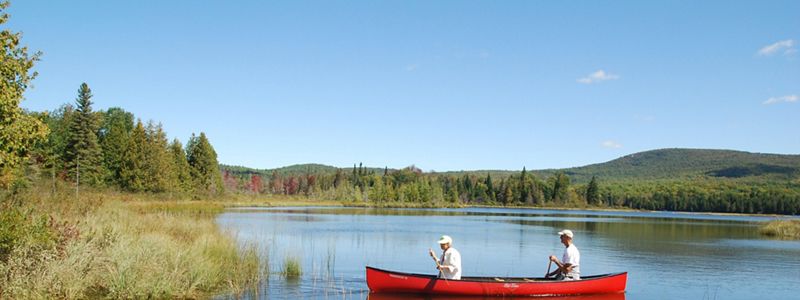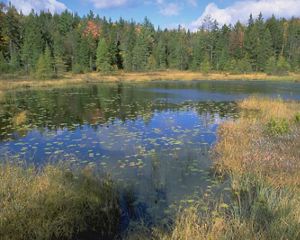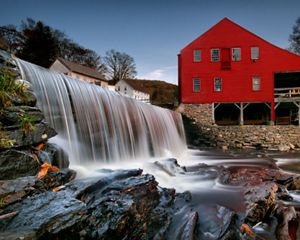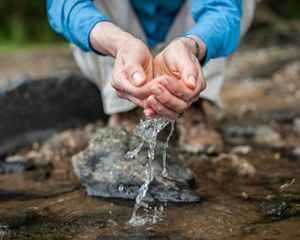Four Ways We Can Conserve Vermont's Waters
Get involved in deepening freshwater solutions to co-create healthier and safer communities.
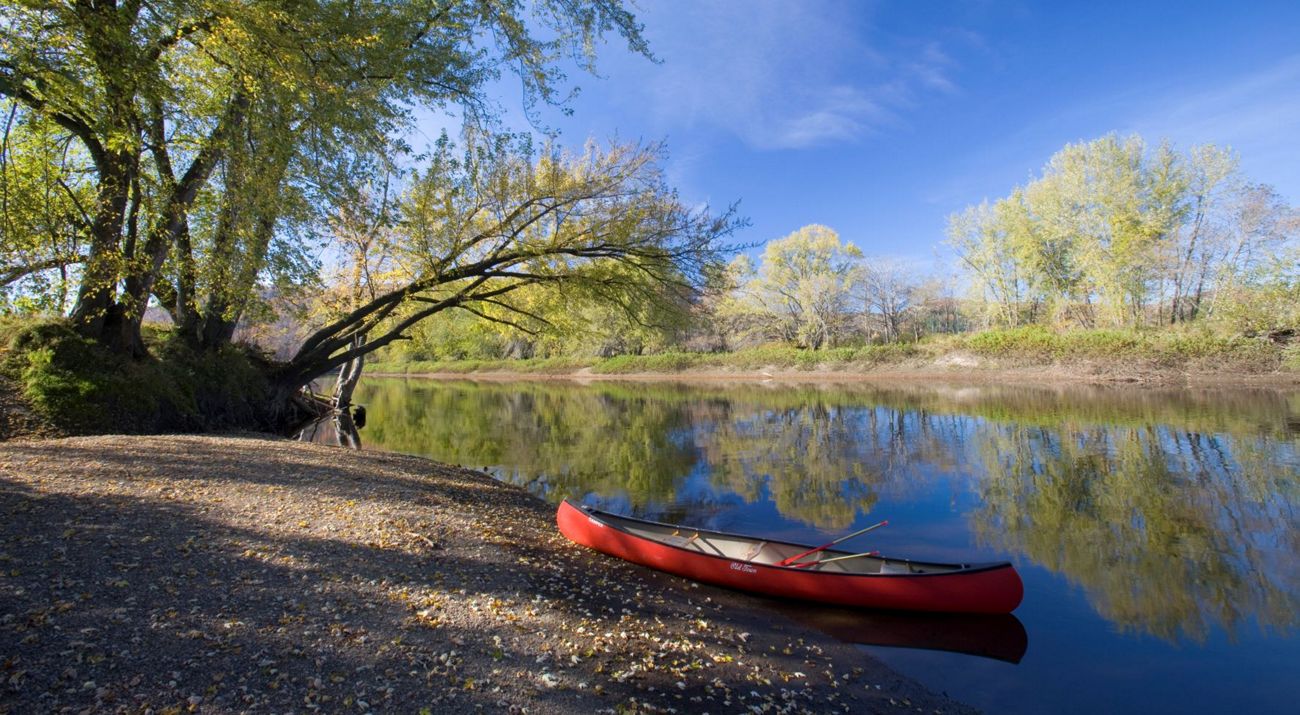
Water touches every aspect of our lives. Whether it is the water we drink, the lakes we boat on, the food we eat, the rivers we fish or the floods we fear, our health and the health of our communities is dependent on how we care for and steward freshwater.
The Nature Conservancy (TNC) is working across Vermont with individuals, other non-profits, advocates and state and federal agencies on reconnecting our waterways to make them healthier and safer so both people and nature can thrive. Our goal is to co-create healthier and safer communities in the face of a changing climate landscape.
Brave Little State: What do old streams look like?
A great discussion around the history of rivers in VT, and the reason why the recent floods in VT occurred.
The latest episode of Brave Little State features Gus Goodwin, TNC Senior Ecological Planner, and Shayne Jaquith, TNC Watershed Restoration Manager talking about the recent floods in Vermont.
We’re investing in nature this decade
We are building on past successes. To date over 140 dams have been removed in Vermont and, since 2016, 52 acres of floodplains restored and 1,059 acres of river corridor protected.
But there is more work to do, especially when considering the source of our current water quality challenges. Over 75% of our rivers have been impacted by mismanagement or altered to accommodate farming and development. This legacy has made us more vulnerable to climate change-driven extreme weather events and poor water quality.

Freshwater Restoration Stats
- 140 dams have been removed in Vermont
- 52 acres of floodplains have been restored since 2016
- 1,059 acres of river corridor have been protected
- 75% of our rivers have been impacted by mismanagement or altered to accommodate farming and development
TNC is in it for the long haul to undo generations of poor practices. The recent federal infrastructure bill creates a once-in-a-generation opportunity to invest in nature to solve these perennial issues.
The water we depend on depends on us. In this next decade, we are conserving healthy waters, scaling up dam removals, reconnecting our rivers and streams to their floodplains, and protecting river corridors to co-create thriving watersheds for all.
Safeguarding Healthy Waters

Scaling Up Dam Removals
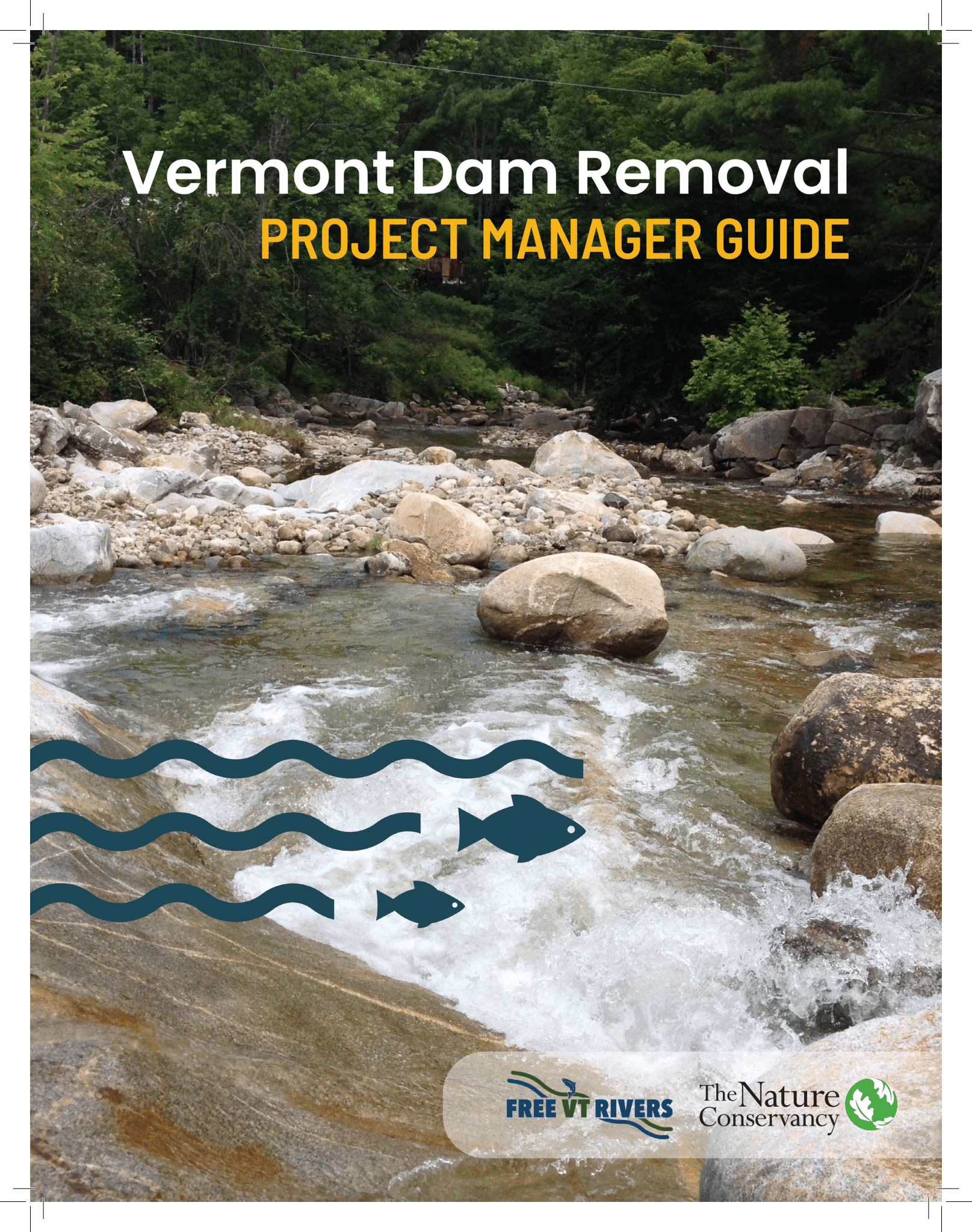
Did you know that removing a dam can create better fishing and boating opportunities, make Lake Champlain a safer swimming destination year-round and decrease household flood insurance premiums?
There are more than 1,000 of these man-made barriers disconnecting our waterways across Vermont. Many are relics of a bygone era, serving no purpose except creating undesirable impacts such as blocked fish passage, warming our waters and safety hazards. Additionally, the property owner who finds themselves inheriting even a small antiquated dam is also liable for any safety risks it may pose downstream.
Dam removal has become an increasingly popular practice in recent years as communities and environmental organizations recognize the many benefits of restoring natural river systems. Dam removal was once unusual; today it is considered one of the fastest and most effective ways to restore a river. Below, find our dam removal guide to better understand and begin the process of removing a dam.
Resources for Dam Removal
- VT Dam Removal Guide (.pdf)
- Q+A About Dam Removal (.pdf)
Focusing on Floodplains

Floodplains, the low-lying areas adjacent to our rivers, are one of nature’s secret weapons, acting as sponges to slow, filter, and clean our waters. This “nature-based solution” is the key solution to some of our freshwater challenges.
Because our rivers have been straightened and divorced from their floodplains, Vermont’s rivers carry more nutrients and sediments and flow faster and more forcefully, contributing to more serious flooding and poor water quality—an accelerating issue due to climate change.
Investments in nature are cost-effective and have multiple benefits. Floodplain protection and restoration improves flood resiliency and water quality, increases carbon storage and conserves critical fish and wildlife habitats. Recent Vermont-based research highlights the suite of values that restored floodplains contribute:
- At Black Creek in Fairfield, VT, 21 acres of re-connected floodplain captured more phosphorous than was discharged in 2008 by 56 of the 60 wastewater treatment plants in the Vermont portion of the Lake Champlain Basin.
- Floodplain restoration is an estimated 2.8 times more cost-effective at reducing phosphorous than stormwater management.
- Protecting and restoring floodplains can increase the amount of phosphorous they store by 37 pounds per acre per year.
The cost benefits of conserving and restoring our floodplains, wetlands, and other natural communities are clear. It is only by working with nature that we can create durable solutions to some of our intractable environmental challenges which is why we are working across the state to support functioning floodplains as an important solution to Vermont’s freshwater issues.
Floodplain Restoration Resources
Protecting River Corridors

We don’t often think of the land around a river as part of the river itself, but these corridors or “meander zones” are a critical piece of the river’s dynamic system. Historically, we have developed in these river routes and oftentimes the most vulnerable Vermonters reside in these high-risk river corridors.
Vermont is declaring an average of 1.4 major flooding disasters per year. In fact, 70-80% of all flood-related damage and costs are due to rapidly moving rivers that create powerful erosive forces, rather than slow-rising floodwaters. Protecting river corridors reduces flood damage by helping rivers reconnect to their floodplains, thereby storing more water during flood events, and decreasing damage to flood-vulnerable structures, our transportation networks and other investments.
As we adapt to the severity of weather events, we need to act to protect those most at risk to flooding while working with nature to increase flood and climate resilience. Protected river corridors would slow the corrosive energy of flood events and minimize impacts downstream, better safeguarding people and our communities as our climate changes.
River Corridors Resource
- Flood Safety Act (.pdf)
- Vermonter Views of Flooding & River Policy (.pdf)
Download
We Can’t Save Nature Without You
Sign up to receive monthly conservation news and updates from Vermont. Get a preview of Vermont's Nature News email.
